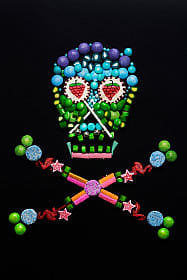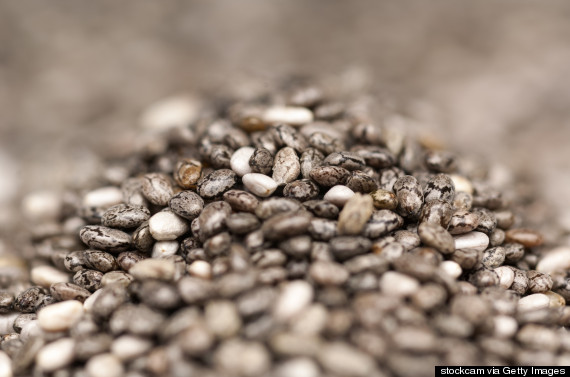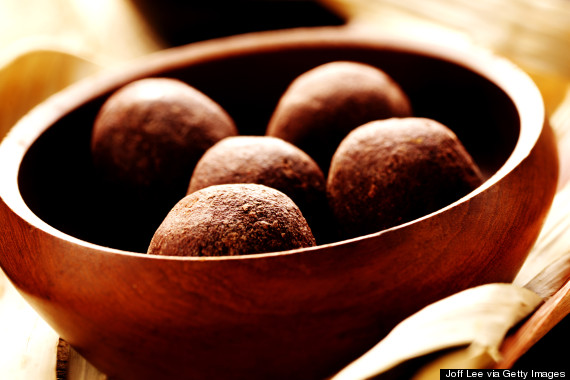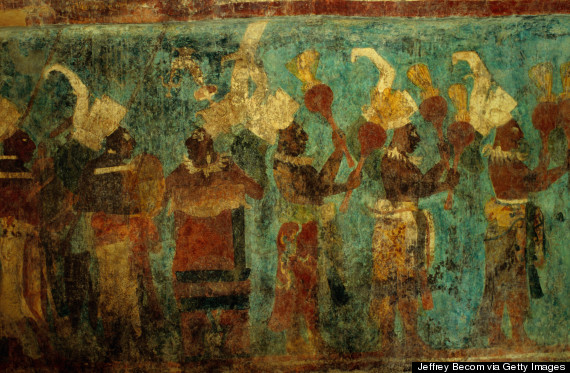Uncategorized
now browsing by category
White Poison-Sugar!
5 Clues You Are Addicted to Sugar
Most of us have felt the urge, the unstoppable craving driving us to seek out something sweet and devour it in a flash. That uncontrollable yen for cookies, cake or ice cream or that whole basket of bread calling to us to finish it off. Why do you overeat? Why does that cookie have such power over you, even though you know it will make you fat and sick? Is it an indication of your moral weakness, lack of will power, or is it a powerful hardwired brain response over which you have little control?
Debate has raged recently about whether junk food, the hyper-processed, hyper-palatable food that has become our SAD (standard American diet) is addictive in the same way that heroin or cocaine is addictive. A new study published in the American Journal of Clinical Nutrition suggests that, in fact, higher sugar, higher glycemic foods can be addictive.
David Ludwig, author of Ending the Food Fight, and his colleagues at Harvard, in a very sophisticated study, showed that foods with more sugar, foods that raise blood sugar even more than table sugar such as white flour, white potatoes and refined starch have what is called a high glycemic index, trigger a special region in the brain called the nucleus  accumbens that is known to be “ground zero” for conventional addiction, such as gambling or drug abuse.
accumbens that is known to be “ground zero” for conventional addiction, such as gambling or drug abuse.
It appears part of the reason almost 70 percent of Americans are overweight or one in two Americans has pre-diabetes or Type 2 diabetes may not be gluttony, lack of willpower or absence of personal responsibility but plain old, garden variety biological addiction.
Many previous studies have shown how this region of brain, the pleasure center, lights up in response to images or eating sugary, processed or junk food. But many of these studies used very different foods as a comparison. If you compare cheesecake to boiled vegetables, there are many reasons the pleasure center can light up. It tastes better or it looks better. This is interesting data, but it’s not hard proof of addiction.
This new study took on the hard job of proving the biology of sugar addiction. The researchers did a randomized, blinded, crossover study using the most rigorous research design to ward off any criticism (which will inevitably come from the $1 trillion food industry).
They took 12 overweight or obese men between the ages of 18 and 35 and gave each a low sugar or low glycemic index (37 percent) milkshake, and then, four hours later, they measured the activity of the brain region (nucleus accumbens) that controls addiction. They also measured blood sugar and hunger.
Then, days later, they had them back for another milkshake. But this time they switched the milkshakes. They were designed to taste exactly the same and be exactly the same in every way except in how much and how quickly it spiked blood sugar. The second milkshake was designed to be high in sugar with a high glycemic index (84 percent). The shakes had exactly the same amount of calories, protein, fat and carbohydrate. Think of it as a trick milkshake. The participants didn’t know which milkshake they were getting, and their mouth couldn’t tell the difference, but their brains could.
Each participant received a brain scan and blood tests for glucose and insulin after each version of the milkshake. They were their own control group. Without exception, they all had the same response. The high sugar or glycemic index milkshake caused a spike in blood sugar and insulin and an increase in reported hunger and cravings four hours after the shake. Remember — exactly the same calories, sweetness, texture and macronutrient content.
This finding was not surprising and has been shown many times before.
But the breakthrough finding was this: When the high glycemic shake was consumed, the nucleus accumbens lit up like a Christmas tree. This pattern occurred in every single participant and was statistically significant.
This study showed two things.
First, the body responds quite differently to different calories, even if the protein, fat and carbs (and taste) are exactly the same.
And second, foods that spike blood sugar are biologically addictive.
This game-changing study must force a shift in the conversation about obesity in America. There are 600,000 processed foods in the marketplace, 80 percent of which have added hidden sugar. The average American consumes 22 teaspoons of sugar a day, mostly hidden, and the average teenage boy has 34 teaspoons a day (more than two 20 ounce sodas). One serving of Prego tomato sauce has more sugar than a serving of Oreo cookies. Sweetened yogurts can have more sugar than a can of soda.
Sugar is the core ingredient used by the food industry to make bad ingredients (processed flour and chemicals) taste good. Our consumption has increased from 10 pounds per person in 1800 to 140 pounds per person per year today.
Each year, the average American also consumes 133 pounds of white or wheat flour, which raises blood sugar more than table sugar (sucrose).
When a 12-year-old boy needs a liver transplant after a steady diet of soda and white flour, or when a 2-year-old can’t walk because he is too fat at 50 pounds, we can no longer point to personal responsibility as the solution to our obesity epidemic.
What if Kobe Bryant or LeBron James went on national television promoting the benefits of “cocaine water” to increase sports performance? Would you allow heroin dispensers in your kid’s school? Think heroin lollipops or morphine muffins. This is exactly what’s happening in America today.
No one wants to be fat or become a drug addict. No one wants their life destroyed by disability and illness. We have policies and laws that protect people from alcohol, tobacco and illegal drugs of abuse. Sugar and flour (and too much starchy white potatoes and white rice) or products containing them appear to be no different. In fact, some animal studies show that sugar is eight times as addictive as cocaine.
It is time to stop blaming the fat person. Can we really blame our children if we freely give them drugs of abuse in the school lunch line or as after school snacks? Can we really blame the average overweight person? The nutritional landscape in America is a food carnival.
Kelly Brownell from Yale’s Rudd Center for Food Policy and Obesity has created a validated food questionnaire to help you determine if you are a food addict. He recently also published a textbook, Food and Addiction, that lays out the science of how our hyper-processed, hyper-palatable, hyper-sweet industrial food has hijacked our brain chemistry and biology.
Here are five clues you may be addicted to sugar, flour and processed food:
- You consume certain foods even if you are not hungry because of cravings.
- You worry about cutting down on certain foods.
- You feel sluggish or fatigued from overeating.
- You have health or social problems (affecting school or work) because of food issues and yet keep eating the way you do despite negative consequences.
- You need more and more of the foods you crave to experience any pleasure or reduce negative emotions.
If you are among those whose brain chemistry, taste buds and hormones have been hijacked by the food industry (up to 70 percent of us, including 40 percent of children), then it is time to stop blaming yourself and consider food rehab or a sugar detox. It is time for all of us to take back our health and demand that our children be protected from addictive substances in our schools and from the insidious marketing practices directed at them from the food industry.
There are resources to help you break your food addiction and stop the cravings.
Now, I would love to hear from you.
Have you experienced uncontrollable cravings for sugar and refined foods?
How has it affected your life?
Have you blamed yourself for your behavior?
Do you think we should change food policy to protect children from marketing of foods proven to be addictive?
To your good health,
Mark Hyman, MD
From Size 14 to 0: Andrea’s Story
Wow, was my reaction when Andrea walked into Panera’s on Cattleman Road, Sarasota, FL. The last time I saw Andrea, she had lost about 20 pounds but she still had a ways to go. Now here she was, down to a size 0 and looking fabulous! Andrea had sent me an email to a link to the movie The Genetic Roulette, and I watched it and was just as outraged as she was by what the FDA and Monsanto are doing to our food supply. She had said in the email that she had lost a substantial amount of weight. So, she is health conscious and concerned about GMOs, just like me, so I called her and suggested that we get together over coffee at Paneras, our normal place to meet.
Here is my conversation with Andrea:
Me: What was the catalyst that motivated you to lose weight?
Andrea: I watched the move Genetic Roulette and got so mad at what Monsanto was doing to our food, that I just decided that I wanted to eat healthier. I was determined that Monsanto wasn’t going to poison me. All of my family is gone, they all died young and I am determined to live longer than them. I want to live until I am 150. (That is not a typo.)
Me: What was a typical day for you?
Andrea: (She hands me a flyer that she has made.) Breakfast consists of smoothies made with a Bullet (mixer). Everything is organic (of course), lots of fruits, nuts, dates, maple syrup for sweetness. Lunch and dinner is veggies such as tomato, red onion, red bell pepper, red cabbage, avocados, cukes, kale, potatoes, miller, lentils, chick peas, garlic, ginger, mushrooms, onions. They can be prepared raw or steamed. Snacks are dehydrated apples and bananas.
I noticed that Andrea had a glass bottle of cloudy water with her. She said it was water and fresh squeezed lemon juice. She also had samples of her dried apples and bananas that she gave us that were very good. “I needed something crunchy to snack on so I make these,” Andrea told us.
Me: So how much weight have you lost all together and when did you start?
Andrea: I have lost 60 pounds and I began October 2012. (Today’s date is 1/8/2014)
Me: Did you make little changes or did you go full on cold turkey?
Andrea: Cold turkey.
Me: Did you crave anything or feel terrible when you started?
Andrea: No, I felt fine because I was already eating pretty healthy when I started. I did go to bed for the first week crying because I couldn’t eat my bowl of popcorn at night.
From Andrea’s Flyer:
This is how I started the switch, (I watched Genetic Roulette Movie, The World According to Monsanto.)
2. Two week Alkaline diet. (“Dropping Acid“)
3. Rainbow diet – 100% Organic foods. (Basically means eating a lot of colorful veggies.)
4. Commit to non processed foods, and go vegan if you can, non-gmo and as much organic as possible. Eat “whole, fresh foods.”
5. Clean your liver first thing in the morning with lemon in your water in place of coffee.
6. Also read Natural Cures by Kevin Trudeau. Great info.
Me: Kevin Trudeau as in the guy who ran to Switzerland to avoid paying taxes?
Andrea: Yes, he has a lot of good information in the book.
Me: What do you do when you go out to a restaurant?
Andrea: I bring my own food.
Me: What? No, that’s not possible. Really, what do you do when you go out to dinner with friends.
Andrea: I don’t go out to eat.
Me: That would be a big problem for me and my friends who like to go out to eat.
Andrea: Yeah, that would be tough, I agree, but I don’t go out.
Me: Do you ever go off the diet and eat a hot fudge sundae?
Andrea: No never. Do you know what is in dairy?
Me: Yes. (Bovine growth hormone, antibiotics, etc.) What about organic milk?
Andrea: I don’t really trust that it is organic.
“I’m passionate about removing all the toxins from my bod and my life. My goal is health and longevity.”~Andrea Page
Me: Do you use a sugar substitute like Stevia?
Andrea: I don’t really trust that either.
Me: Health wise do you feel any differently?
Andrea: I no longer have migraines, my knees don’t hurt anymore, and my skin is clearer.
Me: Did you notice anything else?
Andrea: My taste buds reset after 90 days where I no longer had any cravings or desire for sweets or other non healthy food.
We finished our conversation ended it with what Andrea was up to with her business with Send Out Cards and we agreed to meet on Tuesday (1/14/2014) at Tanya’s house to clean out all the junk food and go shopping for organic veggies. I’m bringing the video camera and will be recording the entire process.
More to come…
Ancient Health And Healing Secrets
In the modern world — when technological advances and information overload have left many of us with a desire to get back to basics — the need for ancient wisdom may be more important than ever before.
Ancient health and healing secrets are making something of a resurgence, and for good reason. The ancient Greeks asked the big questions about what it means to live a good life, and some of their theories on ethics and happiness have been backed by modern science. Thousands of years ago, Indian sages developed a system for stilling the thoughts that’s now practiced across America. The early Maya civilizations, too, developed healing systems that have influenced holistic healthcare to this day.
The Maya civilization thrived for six centuries through areas that are now Yucatan, Quintana Roo, Campeche, Tabasco, and Chiapas are in Mexico, as well as parts of Belize, Honduras, El Salvador and Guatemala before collapsing mysteriously around 900 AD. The Mesoamerican civilization — advanced in its art, architecture and mathematics — may not have survived, but many of their secrets to good health, healing and living well are still alive to this day.
Here are eight things the Maya can teach us about living well.
They ate chia seeds.

Chia — derived from the Mayan word for strength — was a dietary staple of the ancient Aztecs and Mayas, and one that kept them healthy and energized. In addition to eating the seeds regularly, the Maya also used them in religious ceremonies.
The superfood is high in protein and fiber, and it’s loaded with healthy omega-3 fatty acids, which are essential for maintaining good cognitive function and may even play a role in preventing cancer.
The body and soul were treated as one.

For the Maya, health was all about balance — and disease, on the other hand, was seen as the manifestation of imbalance. To cure these imbalances, the Maya incorporated plants and herbs, their own forms of massage and acupuncture, hydrotherapy and prayer into their healing procedures.
The holistic healing tradition of the Maya was a medico-religious one, meaning that they treated both ailments of the body and of the spirit, and recognized their interconnection. The Maya healers sought primarily to balance the flow of ch’ulel, or life-force, in the body, making Maya medicine very similar to traditional Chinese medicine which also seeks to direct the body’s life-force (qi). For the Maya, this ch’ulel (which forms the first principle of Maya medicine) is a sign of the interconnection of body and soul, which forms the second of the six principles.
“Ch’ulel represented that everything was linked and unified,” wrote Bonnie Bley in The Ancient Maya and their City of Tulum. “The physical and spiritual worlds were at opposite ends of a continuum surrounded by medicine which aided the spirits in the healing process.”
Clearly, they were on the right track: An extensive body of research has suggested that emotional health can have a significant impact on physical health.
Healers were central to the culture.

In the Maya civilizations, the healer, or h’men, played a central role in the community. They possessed an extensive knowledge of the healing remedies, and used them to restore the individual in ill health to a state of equilibrium. The indigenous healing tradition has been passed down orally for many generations and the descendentants of some Maya healers still practice to this day, largely in the Yucatan region of Mexico.
The healers played an important role in the community, particularly in the Yucatan and Campeche cultures.
The indigenous healer is, in many cases, a traditional authority or community leader, and in general is recognized as a servant of the community,” write Hernán García, Antonio Sierra and Gilberto Balam in Wind In The Blood: Mayan Healing And Chinese Medicine. “To the present day these healers are essential to their communities. The recognition they receive, despite changing social conditions, allows them to continue exercising their medical practice.”
They ate chocolate. Lots of it.

As long as 2,600 years ago, the Maya may have been regularly consuming chocolate. Archeologists found residue of chocolate on an ancient teapot, and now believe that the Maya were drinking chocolate for up to 1,000 years earlier than was previously thought. The Maya incorporated the ancient superfood cacao into their diet regularly — some say they consumed cacao at every meal — to maintain good health.
“It was the beverage of everyday people and also the food of the rulers and gods,” Jonathan Haas, curator of the “Chocolate” exhibition at the Field Museum in Chicago, told National Geographic. “In fact, the scientific name for the cacao tree is Theobroma cacao — ‘food of the gods.'”
It may have played a significant role in their good health. Cacao and cocoa products are packed with flavanols, an antioxidant shown to benefit heart and brain health, which is also found in red wine, berries and teas. Cocoa is high in magnesium, a mineral that’s important for many bodily processes, and is also rich in calcium, iron, copper, zinc and potassium, not to mention loaded with fiber.
They believed in living by natural cycles.

A strong belief in natural cycles of birth and death helped to bring meaning and structure to Maya lives, and formed the basis of their religious beliefs.
“The Maya believed deeply in the cyclical nature of life –- nothing was ever ‘born’ and nothing ever ‘died’ -– and this belief inspired their view of the gods and the cosmos,” according to the Ancient History Encyclopedia.
The many rituals and ceremonies of the Maya were generally tied to these cycles, which were embodied by the Maya maize god. According to Maya myths, the maize god was decapitated at the time of harvest and reborn at the beginning of the growing season. The myth of the maize god helped them to explain the changing of the seasons and the annual return of maize, their most important crop.
“The Mesoamerican worldview was constantly in motion, in cycles of birth and death, termination and regeneration,” anthropologists William Duncan and Charles Hofling wrote in a paper published in Ancient Mesoamerica in 2011. “Everything that came to be needed to be animated or ensouled, and would eventually be terminated.”
Spiritual belief like the kind that the Maya lived by comes with a number of possible health benefits, including lower stress levels, improved mental health and maybe even increased longevity.
They were one of the earliest cultures to keep pets.

In the Archaic period, the Maya domesticated dogs and turkeys to coexist with them as pets. In parts of Guatamala populated by the Maya, archeologists found turkey fossils with clipped wings, suggesting that they were kept in captivity. While the turkeys may have been bred for food, dogs were often used as companions, according to archeologist and Maya researcher Robert Sharer.
The health benefits of animal companions are many: Pet ownership has been linked to decreased blood pressure and cholesterol levels, as well as boosts in mood and decreased loneliness. Having a dog in the house has even been shown to improve children’s health, reducing their risk of developing the common cold.
They had sophisticated plumbing.

Recent research suggests that the ancient Maya likely had sophisticated enough plumbing to provide them with running water, fountains and toilets. While it was previously thought that the ability to generate water pressure came when the Spaniards conquered the area, scientists found that the Maya center in Chiapas, Mexico had an elaborate system of managing water.
But these plumbing systems weren’t purely functional: Being surrounded by water may have boosted their well-being. Living near a body of water has been linked with increased health and well-being, and for thousands of years, the healing power of water has been harnessed through hydrotherapy.
“I actually think that the creation of water pressure at Palenque was a sign of wealth,” Pennsylvania State University archaeologist Kirk French told LiveScience. “It was definitely not necessary. They had water everywhere. The Maya of Palenque were never more than 150 meters (492 feet) from a source of water. Water pressure technology would have been useful through the display of power and knowledge, similar to how priests and shamans used astronomical events.”
Their family ties were strong.

In the Maya culture, family was important. It wasn’t so much about the clan or kinship as it was about the household, which could be either single or multiple family units. The multiple-family household is a part of the cultural tradition, some scholars have suggested.
“Within historical multiple-family households are nuclear families linked by a wide variety of kinship ties — parents and sons, parents and daughters, two or three brothers or sisters, cousins, and maternal or paternal uncles and aunts,” cultural anthropologist Richard Wilk wrote.
Strong family and community ties have been linked with increased well-being and boosted immunity, as well as enhanced longevity.
Let Go of Perfection

Prevention News
Prevention News
Why You Should Let Go Of Weight Perfection
What’s Your Ideal Weight?
What that number really means
By Tracy Miller

There’s your age. Your birthday. Your phone number. Your social security number. And then there’s that other number that’s been lurking in your head for years: Your ideal weight.
If you’re like most women, those three digits are all but tattooed in your brain—easily conjured up the moment your jeans feel snug or you step on the scale. But how did it get there in the first place? And what does it even mean? Not much, according to experts.
“A lot of women have an ‘ideal’ weight they think they’ll feel best at,” says Jessica Crandall, a registered dietitian and spokesperson for the American Academy of Nutrition and Dietetics. “Even though they’re healthy and their BMI is healthy, they still feel that pressure that can encompass their entire lives.”
Often, says Crandall, we fixate on a target weight—wanting to be 125, say, when you’re actually 135—without really knowing why. “You may have been there once early on, in your teens or early 20s, and you felt comfortable at that time,” says Crandall. “Or it might be something that a doctor once put into your head, and it just stuck there.” But chances are, it doesn’t deserve the attention you’ve been giving it.
If losing a little weight has become an oversized obsession, here’s how to divert your focus away from that number and toward more important things—you know, like the rest of your life.
Ask yourself why. “I ask clients what their goals are to help them see where they’re coming from,” says Crandall. If your ideal weight is a number you’ve been carrying around for decades because it’s what you weighed in college or at your wedding, ask yourself what’s more important—hitting that number again or how you feel from day to day? Restate for yourself the importance of a healthy balance between work, life, and concerns like diet and exercise.
Pick a new measurement. In fact, don’t just stop at one. Several different factors go into determining your individual healthy weight range, says Crandall, such as body fat composition, bone size, muscular structure, BMI, and waist circumference. A registered dietitian can properly assess the overall balance of your body and whether you really need to lose a few pounds—or need help setting more appropriate goals.
Stop the strict dieting. “There is not one food that’s going to cause you to gain weight,” says Crandall. Yet many women stick to a short list of “acceptable” foods when dieting—which can backfire. Dieters may cut out sugar, for instance, and think that means they shouldn’t eat a fresh orange, says Freytag. “Of course you should have an orange!” she adds. “It’s the added sugars in processed foods and drinks that are the problem.”
More from Prevention: Why You Shouldn’t Be a Diet Perfectionist
Don’t live at the gym. If you’ve been plugging away on the elliptical trainer with all the enthusiasm of a prisoner walking the plank, try mixing it up. “You don’t want to become obsessive with your activity,” says Crandall. “If you’ve been running and running and running, try yoga or biking.” Determine a healthy amount of time you want to devote to exercising each week, then stick to the plan.
Focus on re-sculpting. “Muscle is the secret to long-term metabolism boosting,” says Freytag. “I usually say to women, ‘Let’s forget about those five pounds and focus on re-sculpting your body.’ ” If you change your focus to being healthy, fit, and toned, a few pounds up or down won’t matter.
Published April 2012, Prevention
Why You Should Let Go Of Weight Perfection
What’s Your Ideal Weight?
By Tracy Miller

There’s your age. Your birthday. Your phone number. Your social security number. And then there’s that other number that’s been lurking in your head for years: Your ideal weight.
If you’re like most women, those three digits are all but tattooed in your brain—easily conjured up the moment your jeans feel snug or you step on the scale. But how did it get there in the first place? And what does it even mean? Not much, according to experts.
Published April 2012, Prevention
Genetic Roulette
Jeffrey M. Smith, author of the world’s bestselling book on GMOs, Seeds of Deception, is a leading consumer advocate promoting healthier non-GMO choices. 
Genetic Roulette – The Gamble of Our Lives has won the 2012 Movie of the Year by the Solari Report and the Top Transformational Film of 2012 by AwareGuide!
Never-Before-Seen-Evidence points to genetically engineered foods as a major contributor to rising disease rates in the US population, especially among children. Gastrointestinal disorders, allergies, inflammatory diseases, and infertility are just some of the problems implicated in humans, pets, livestock, and lab animals that eat genetically modified soybeans and corn.
Monsanto’s strong arm tactics, the FDA’s fraudulent policies, and how the USDA ignores a growing health emergency are also laid bare. This sometimes shocking film may change your diet, help you protect your family, and accelerate the consumer tipping point against genetically modified organisms (GMOs). Don’t miss this film!



 D5 Creation
D5 Creation